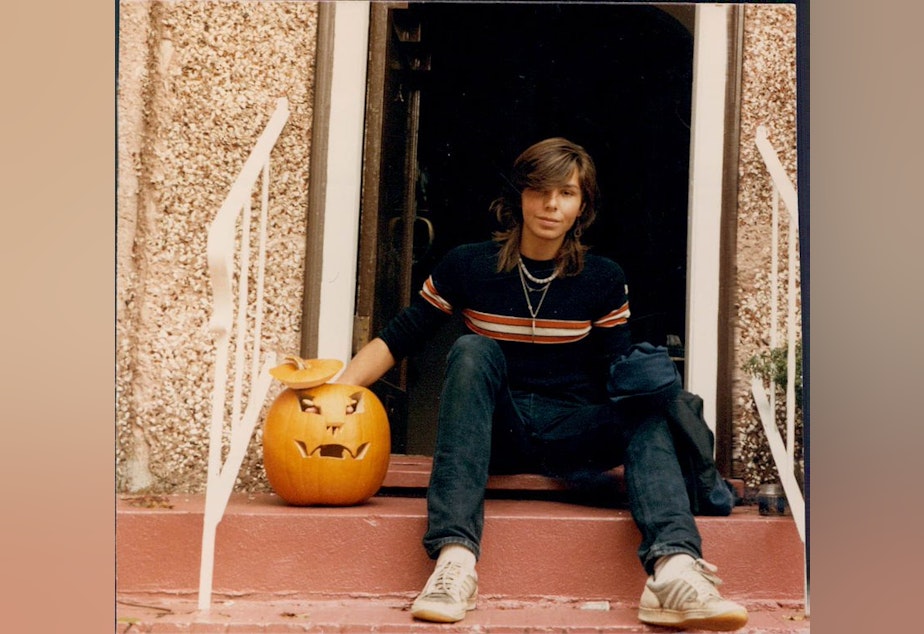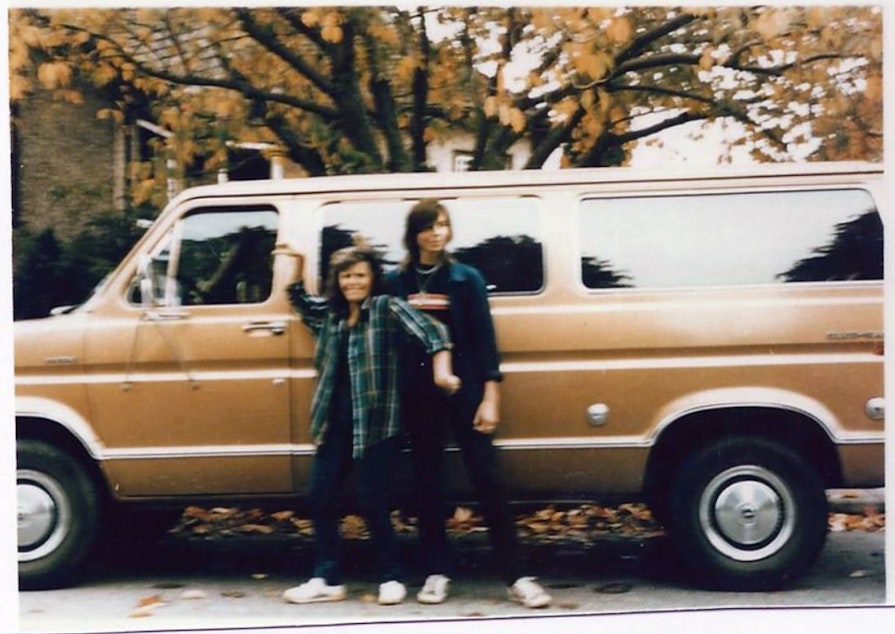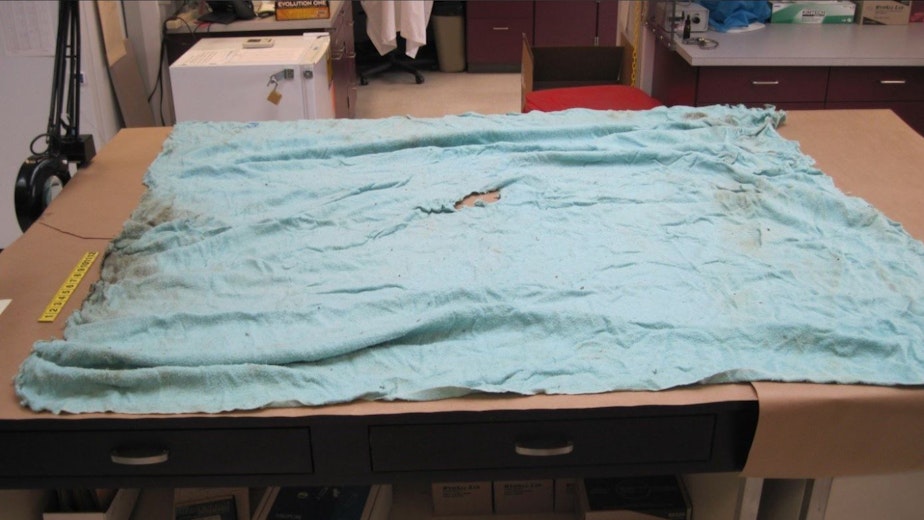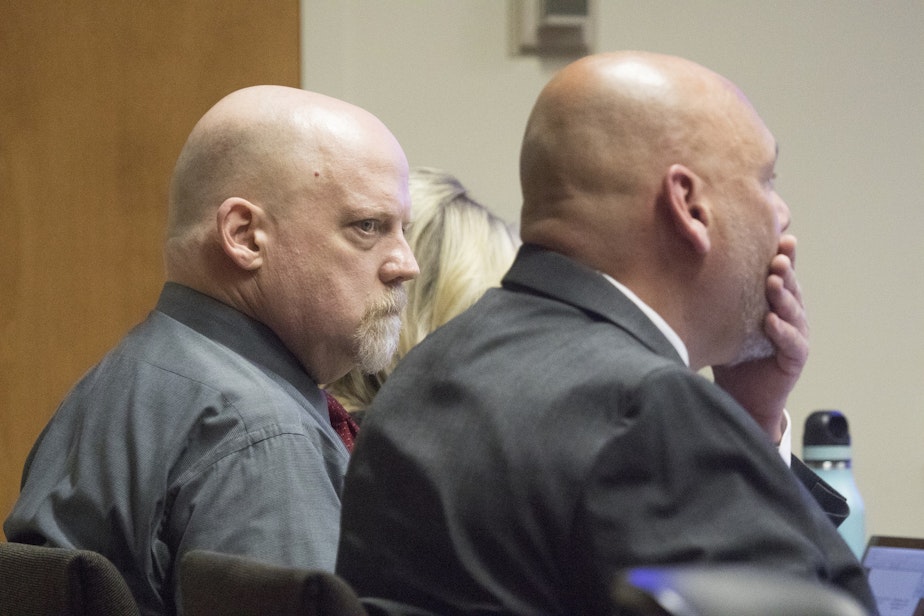This horrific cold case could be solved by tracing the murderer's family tree

To the FBI profiler, it didn’t look like the first time this person had murdered somebody.
Wednesday, November 18, 1987
Dirty Dancing was in theaters. Ted Bundy was on death row (the Green River Killer was still on the loose). Baby Jessica had been rescued from the well.
And a young Canadian couple, four months into their relationship, were packing for an overnight trip to Seattle.
Jay Cook, 20, was tall, with soft brown eyes and a feathery mullet. His friends and family were the center of his life, and he hoped to go to school for marine biology. His girlfriend Tanya van Cuylenborg, 18, had round cheeks and an easy smile. She was quiet, but funny, and at graduation had worn a tuxedo with a green bow-tie. She dreamed of being a photographer.
Jay and Tanya had grown up in a well-to-do neighborhood of Victoria, a city that sits on the southern tip of Vancouver Island off the west coast of Canada. Jay’s dad ran a furnace repair business out of the house and had tasked Jay and Tanya with driving to Seattle’s industrial district, what is now called Sodo, to pick up parts at Gensco Heating.
Sponsored
The plan was straightforward: Jay and Tanya would take the 4 p.m. ferry to Port Angeles. They would drive to the Kitsap Peninsula and take a second ferry to Seattle. There they would sleep in the family van – a 1977 Ford Club Wagon, a boat of a vehicle, copper in color – in the parking lot at Gensco Heating. They’d wake up, get the parts and return home.


The morning of their trip, Jay packed sleeping mats and blankets into the van and split a leftover sandwich with his little sister Laura. As Jay drove to meet Tanya, Laura stood at the window and waved him out of sight. It was the last time she would see him.
Tuesday, November 24, 1987
A week later, two days before Thanksgiving, a man walked along a rural road in Skagit County, collecting aluminum cans. The road sloped down into a ditch, and there he saw a young woman’s body.
It was Tanya.
She was naked from the waist down, apart from her white cotton socks. Her bra had been pushed above her breasts. A pack of playing cards and a book of matches were in her jacket pocket, along with a makeup pencil. She’d been shot in the back of the head.
She'd been on her period at the time; investigators found a discarded tampon in the van.

Investigators suspected she had been raped before she was killed. The coroner took swabs from her vagina and other parts of her body.
Police found two plastic zip-ties near her Tanya, like the ones cops use to restrain people in custody. There was also the casing of a .380 caliber bullet.
There was no sign of Jay, or the Ford wagon van, or the rest of Tanya’s belongings. Nor was there sign of a suspect.
Wednesday, November 25, 1987
The day after Tanya’s body was found, police in Bellingham, Washington, received an unusual call. The bartender at Essie’s Tavern had found a wallet out back. In the wallet was Tanya’s ID and a pill bottle with Tanya’s name on it.
Police swarmed the scene and found other items under the porch behind the bar.
Sponsored
There were more ID cards belonging to Tanya, a handwritten note addressed to Jay, the lens cap of a Minolta camera like the one Tanya brought on the trip, and the keys to the Ford van. There was also other evidence: two plastic gloves and a box of .380 Silvertip ammunition.
As a detective left the scene, he noticed a large van parked in a Diamond parking lot nearby. It was the Ford Club Wagon. Inside the van was a comforter stained with blood and an ashtray filled with three different types of cigarettes — one was a Canadian brand with lipstick marks (Jay’s mom smoked in the van), another was a brand with gold-foil labeling in French, and the third had orange filters … Camels.
There were also zip-ties, fastened together, like the ones found near Tanya’s body.
Essie’s Tavern was a spitting distance from the Greyhound bus station in Bellingham. Police guessed that the killer drove the van up to Bellingham, ditched some items beneath the porch, parked the van and then booked it by bus.
Thursday, November 26, 1987, Thanksgiving morning
Scott Walker was a hunter, and on this Thanksgiving morning he was with his dog and his friend near Monroe, Washington, hunting pheasant.
As they tromped back to the car, Walker’s dog bolted into the tall grass. Walker followed her to the body of a young man. It was Jay, his head and upper torso wrapped in a blue blanket. At first it seemed he might be asleep. But then Walker saw that his skin was ashy and grey.
When investigators pulled back the blue blanket, they saw evidence of a horrific death. Jay had been beaten around the head until his face and shoulders were so bloody he could barely be recognized. The twine that had tied up the sleeping mats in the van was wound around his neck, along with two red dog collars.
And this: A pack of Camels had been stuffed down his throat. The autopsy revealed that he had died from asphyxiation, and that it had taken him about six minutes to die.

Nearby, detectives found rocks covered in hair and blood. They also found three more sets of zip ties. Two were simple sets connected at one end, like the ones found next to Tanya’s body. The third was a complex tangle of seven ties.
Two bodies. One car. Three counties. Eleven zip ties.
Plot those locations on a map – Seattle, Monroe, Skagit County, Bellingham – and you see a line that runs parallel to Interstate 5.
To law enforcement, it seemed this person knew what they were doing.
To Bob Gebo, an FBI profiler, it looked like the work of a seasoned killer.
“It doesn’t match up with a first-time offender who has no experience in interpersonal violence,” Gebo said.
Gebo, who had consulted on Jay and Tanya’s murders, would later be part of the effort to catch Gary Ridgeway, the Green River Killer. Gebo said the skill and brutality of Jay and Tanya's murders suggested to him that the perpetrator was “somebody that has done this before, has confidence, knows how to do it, has gotten away with it.”
Taking a closer look at Wednesday, November 18, 1987
Police tried to reconstruct what happened to Jay and Tanya on their trip down to Seattle.
The young couple had taken the 4 p.m. ferry to Port Angeles as planned, but then got lost. They stopped at the Hood Canal Grocery in Hoodsport, Washington, for snacks and directions.
Judith Stone worked there and told them they were miles off track. They had tried to take the Hood Canal Bridge and had missed the turn.
Stone recalled another person coming into the store right after Jay and Tanya: a young man in a brown rain slicker. Stone described him as “rude” and “gruff” and said that Jay and Tanya noticeably avoided him.
Just after 9 p.m., the two stopped at Ben’s Deli in Allyn, Washington. At this point, they were an hour away from where they should have turned to take the Hood Canal Bridge, but were back on track towards Bremerton.
Jay chatted with the clerk, Kara Hopper, and bought gas with Canadian money. He told her about his father’s business and said he and Tanya would take the Bremerton ferry to Seattle and sleep in the van outside Gensco Heating. He seemed relaxed, and the couple didn't appear to be in a hurry. Hopper wrote down the van’s license plate, per store protocol.
Jay and Tanya did make it to Bremerton – or someone driving the van did, at least.

They bought a ticket at 10:16 p.m. for the Bremerton ferry that would have arrived in Seattle at 11:35 p.m.
After that … radio silence.
For years, police worked the case, but no suspect emerged. That is, until last year, with the advent of a new way to find criminals – genetic genealogy.
After 1987, looking for the killer
In 1987, DNA analysis was a primitive technology. But even back then police in Washington state knew that DNA evidence could be valuable.
It would still be more than a decade before scientists mapped the human genome … and more than two decades before mail-in DNA kits like Ancestry and 23andMe.
In 1994, police managed to extract a DNA profile from two pieces of evidence in Jay and Tanya’s case. One was from a semen stain on Tanya’s pants, found in the Ford van, and the other was from semen on swabs taken from Tanya’s body during her autopsy.
The DNA from Tanya’s pants and the DNA from her body came from the same mystery person, dubbed “Individual A.”
As DNA technology advanced, investigators would plug that DNA profile into federal databases, hoping for a match. None came up.
In 2018, investigators teamed up with a genetic testing company called Parabon NanoLabs, based in Virginia, to create a model of what this mystery suspect might look like, based on his DNA. But nothing came of it.
And then a break in another case shed light on a new way of finding a criminal: Police in California announced they had identified the Golden State Killer, 32 years after his last known crime. The Golden State Killer is believed to have killed at least 13 people and raped countless women by breaking into their homes at night.
Taking samples from crime scenes, investigators discerned a DNA profile for the Golden State Killer. DNA profiles look like very long strings of letters to the lay person, which investigators upload to a database where other people uploaded their own DNA profiles.
Forensic researchers hoped to find an exact match … or a relative who could point them to their suspect. In the case of the Golden State Killer, they found a distant relative and then used old-fashioned methods (birth and death records, marriage certificates) to fill out a family tree. Police zeroed in on a California man named Joseph DeAngelo.
Police tailed DeAngelo and picked up two items for DNA testing. The 72-year-old's DNA profile matched those found at dozens of crime scenes.
Genetic genealogy itself isn’t new – it was pioneered by genealogists helping people find relatives. Often, these people were adoptees with no knowledge of their birth families.
And then came mail-in DNA kits, exploding the number of people submitting genetic profiles. Those people often submit these profiles to a public genetic database called GEDMatch. The mail-in DNA companies like 23andMe and Ancestry don’t share results, so people wanting to expand their reach will upload it to this site.
This was a revolution in genealogy. There was now a central database for genealogists to find relatives of people with no knowledge of their birth families.
Parabon NanoLabs saw a similar opportunity. After the Golden State Killer case, they hired genealogist CeCe Moore to work with police departments across the globe to identify more suspects in cold cases.
Jay and Tanya’s case was the first one Parabon NanoLabs took on. Snohomish County Sheriff’s Office Detective Jim Scharf uploaded the DNA profile of “Individual A” to GEDMatch on Thursday, April 26, 2019. Moore identified two second cousins – one from each side of the family. For genetic genealogy, this was a very close match.
By that Monday, just four days later, Parabon NanoLabs had identified a suspect: William Earl Talbott II.
Talbott, 56, was single, no kids, a local truck driver whose route stayed in western Washington. He grew up in Woodinville, Washington, a working-class guy. He owns land in Okanogkan County; character witnesses said he likes four-wheeling and camping.
In 1987, Talbott was 24 years old. He lived with two friends the first part of that year: Michael Seat and Timothy McPherson. McPherson got him a job driving a truck for Hirschler Manufacturing. Talbott’s route went through Seattle’s Sodo neighborhood, near the Gensco Heating store where Jay and Tanya planned to sleep.

He moved out of the shared house that August after he lost the job at Hirschler and couldn’t make rent. Seat and McPherson told investigators Talbott moved back into his parents’ house, which was just seven miles from where Jay’s body was found.
Seat also told investigators that Talbott took him to visit the area where Jay’s body was found, beneath the High Bridge, in the early 1980s. The two walked around the area taking photographs – it was a passion they shared.
And Seat said he remembered seeing a big, copper-colored Ford Club Wagon van in the driveway of Talbott’s parents’ house in the fall of 1987. Seat said he noticed because he is a car guy, and the van stood out. A judge later ruled that Seat couldn’t testify to his memory of seeing the car during Talbott’s trial.
Tuesday, May 8, 2018
A plainclothes officer tracked Talbott for days, waiting for him to discard an item with his DNA on it. One day, as Talbott stopped his truck along its route, a disposable paper cup fell out. Forensic specialists swooped in. They extracted a DNA sample and got a match to "Individual A."
When police confronted Talbott, asking if he was indeed William Talbott, he refused to answer. When they arrested him, his wrists were so thick the handcuffs barely fit, and his shoulders were so broad his arms wouldn’t connect behind his back.
Talbott pleaded not guilty shortly after he was arrested on May 17, 2018. His trial has stretched over nearly three weeks. Other than his DNA, only one piece of evidence directly connects Talbott to the murders: a partial palm print found on the back door of the Cook family van.
Tuesday, June 25, 2019
Bill Talbott sat in a small courthouse in Everett, Washington, in the county where Jay Cook’s body was found as attorneys completed closing arguments in his trial.
Talbott was 55, bald with a white goatee and mustache, both trimmed for trial. His gaze was intense. He wore glasses to read court documents.
Prosecutor Matthew Baldock said Talbott had committed atrocities: The rape and murder of Tanya and the brutal, painful killing of Jay.
The state presented what they believe happened: Jay and Tanya met Talbott sometime between 11:30 p.m. on Wednesday, November 18 (when the Bremerton Ferry arrived in Seattle) and 9 a.m. the next day, when the furnace parts store opened.
The prosecutor argued that Talbott killed Jay in the manner he did in order to keep him quiet -- maybe because the killer didn't want Tanya to hear him, or because he knew there were houses near the High Bridge that would hear a gunshot.
The defense argued back that the semen proves only that the two had sex ... and said that Tanya’s fluid in the sample was evidence of arousal.
The prosecution balked: That was not evidence that Tanya was turned on.
The prosecutor asked the jurors to use common sense: How would Talbott have ended up in the van having sex with Tanya? Where is Jay at this time, and what does he think about this? (Also, she is on her period.) And this is the height of the AIDS crisis, 1987, and this sexual contact didn’t seem to involve a condom. Why would she have done that?
Jay’s body was dumped seven miles from where Talbott grew up, the prosecutor said, in a place Talbott had been before. The defense added that Talbott had rented a room from a cop in the 1990s – no murderer would do that, the defense said. Talbott had also passed a federal background check.
The prosecution side-eyed both of those statements in the rebuttal, drawing laughter from the gallery.
But many questions remain in this case. Investigators don’t know how Jay and Tanya met their killer, or who died first. They don’t know how their bodies ended up more than a hundred miles from where they were last seen, separated from their van and from each other.
They don’t know where the gun used to kill Tanya went, or who owned the dog collars and blue blanket found with Jay’s body.
The answers to those questions may not matter. Whatever the jury decides, whether Talbott is locked up for life or free to go, this will be the first time evidence based on genetic genealogy has been put to the test before a court – and has been accepted as legal and admissible.
On Tuesday, the prosecution and defense rested their cases. Talbott’s fate is now in the hands of 12 jurors who could return a verdict as soon as Wednesday afternoon.






